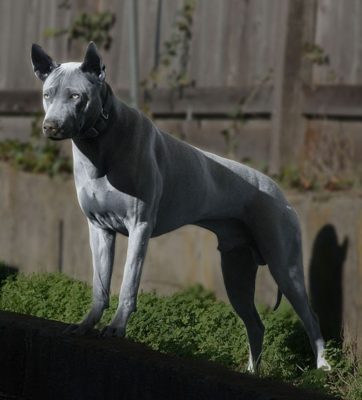Thai Ridgeback
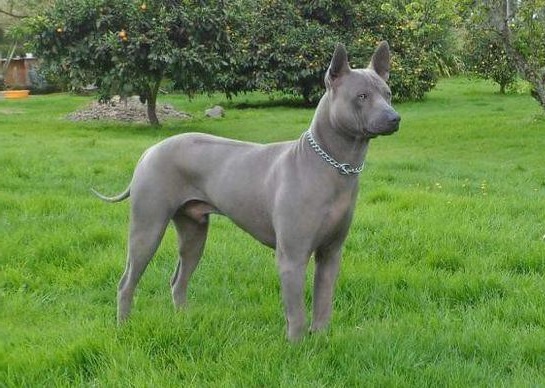
The difference between the Thai Ridgeback and other breeds is independence; the four-legged dog can make his own decisions. The pet stands on its own, showing stubbornness. Habits are formed at an early age; then, it is difficult to change them. Attempts to reeducate the adult dog may end up with a mental disorder. Dogs of this breed are more dominant than females.
Table of Contents
Breed Information
| Another Name | Thai Lang-An |
| Origin | Thailand |
| Height | Males 56-61 cm Females 51-56 cm |
| Weight | 23-32 kg |
| Fur | Short |
| Color | Red, black, blue |
| Lifespan | 11-13 years |
| FCI Classification | Spitz and primitive types |
| Group | Watchdogs, apartment dogs, dogs for kids |
| Price | $500-2000 |
Breed Photos
Origin History
The Thai Ridgeback is a parakeet dog that exists at the expense of humans. The original appearance of the species is unknown. There is a version that the Thai Ridgeback descended from the Funan breed, which existed about a thousand years ago. The peculiarity of these dogs is a mutation of the hair. The hair along the ridge grows opposite to the rest of the coat.
If the breed is not domesticated, it will wander through junkyards and pack with congeners. The four-legged dog was registered with the Asian Kennel Union in 1989 and with the FCI in 1993.
Appearance
The Thai Ridgeback is a dog with a strong backbone, athletic build, and well-developed musculature. The pet’s muzzle is wedge-shaped, with a creased forehead and neck. Almond-shaped eyes range from amber to dark brown. Thai Ridgebacks have a large nasal lobe, and the ears are set high and slightly inclined forward. There is a distinctive ridge on the back of the breed representatives. There are three types of the fur of the four-legged breed:
- standard – 1-2 cm;
- velour – 0.2-1 cm;
- short velour – up to 0.2 cm.
Ridge is a symmetrical band from the top of the body along the spine. The ridge does not transfer to the sides of the dog. The most popular color of four-legged dogs is red. The shape and length of the ridge depending on the type of coat. The dog’s jaws are strong with a scissor-like bite. The tail is long, tapering toward the end, and curved in a sickle shape.
Character
The difference between the Thai Ridgeback and other breeds is independence; the four-legged dog can make his own decisions. The pet stands on its own, showing stubbornness. Habits are formed at an early age; then, it is difficult to change them. Attempts to reeducate the adult dog may end up with a mental disorder. Dogs of this breed are more dominant than females.
The Thai Ridgeback is a loyal animal. Pets do not tolerate loneliness and need attention from the owner. Representatives of the breed quickly find a common language with children of school age. Thais have developed intellect; they can distinguish intonation and understand what is wanted from them.
Dogs are prone to mood swings. Thai Ridgebacks easily adapt to the owner’s regime; the pet does not need to be walked simultaneously.
He is as wary of strangers as he is of new surroundings. He analyzes voices and intonations to assess the situation and make a decision. The dog has a watchdog, guarding, and hunting instincts.
Care
The dog is suitable for keeping in an apartment; it has a short coat and does not have a characteristic smell. It would help if you brushed your dog 2-3 times a week. Choose a device made of natural materials; they additionally massage the skin. During the shedding period, comb every day.
Keep the dog indoors without drafts. Ridgebacks have no undercoat and may catch a cold. In cold weather, take your dog for a walk in an insulated coat. Clean dirt from your pet’s eyes and ears as it accumulates. To prevent unpleasant mouth odors, brush your pet’s teeth 2-3 times a month.
Training
The Thai Ridgeback is highly intelligent, but an incredible stubbornness gets in the way of training. Dogs get bored with monotony, so think of different ways to give commands. Ridgebacks love to manipulate and take the lead, so don’t let them provoke you. Resist aggressive behavior and provide early socialization. Otherwise, Ridgebacks may perceive the world around them as a threat.
Common Diseases
This breed has good health, but there are common diseases to be aware of:
- cardiovascular against the background of overweight;
- digestive diseases;
- dermatitis;
- cold;
- eczema;
- hip dysplasia.
Nutrition
Monitor your dog’s nutrition and the presence of all micronutrients in his food. Foods rich in vitamins should form the basis of your dog’s diet. Avoid fatty foods and foods that are hard on the stomach. Ridgebacks have sensitive gastrointestinal tracts, so choose foods that are easy to digest.
Never combine natural food with prepared foods; this will cause an upset stomach. Give fruits and vegetables to enrich the body with vitamins.
 Schwyz Hound
Schwyz Hound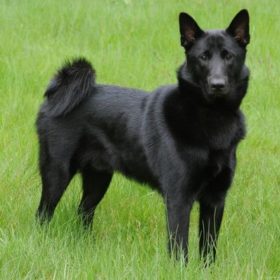 Black Norwegian Elkhound
Black Norwegian Elkhound Posavac Hound
Posavac Hound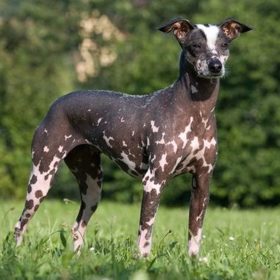 Peruvian Hairless Dog
Peruvian Hairless Dog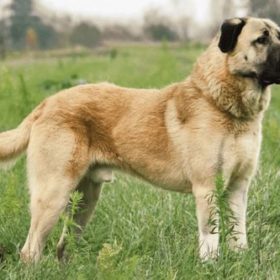 Kangal Shepherd Dog
Kangal Shepherd Dog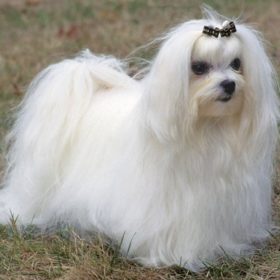 Maltese
Maltese
